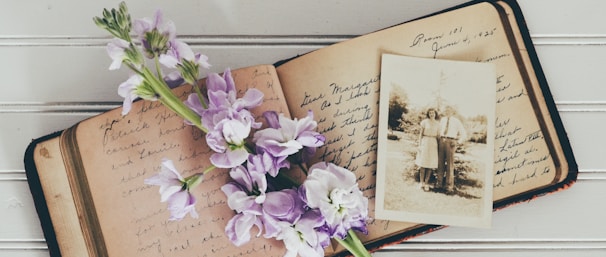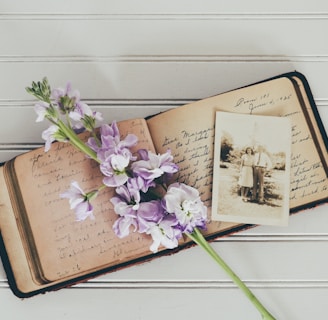The Writer's Lens: Incorporating Photography into Narrative
Bibliotheca Exotica
3 min read


Introduction
Welcome to "The Writer's Lens: Incorporating Photography into Narrative." In this blog post, we will explore the fascinating intersection of photography and writing. We will delve into the ways in which writers can use photographic elements to enhance their storytelling, offering detailed and thorough techniques for integrating visual imagery into narratives, creating photo essays, and drawing inspiration from photographs for character and setting descriptions.
1. Enhancing Storytelling with Visual Imagery
Visual imagery can be a powerful tool for writers, as it helps to engage readers on a sensory level and bring the story to life. By incorporating photography into narrative, writers can add depth and richness to their storytelling. Here are some techniques to consider:
a) Setting the Scene
Photographs can serve as a source of inspiration for creating vivid and detailed descriptions of settings. Take a look at a photograph and let it guide your words. Describe the colors, textures, and atmosphere captured in the image, allowing readers to visualize the scene in their minds.
b) Evoking Emotions
Photographs have the power to evoke emotions, and writers can harness this power to enhance their storytelling. Study the emotions conveyed in a photograph and try to recreate them in your writing. Whether it's joy, sadness, or fear, infusing your narrative with these emotions will make it more relatable and impactful.
c) Adding Symbolism
Photographs often contain symbolic elements that can add depth and meaning to a story. Look for symbolism in the images you come across and consider incorporating it into your narrative. Symbolic elements can help convey themes, foreshadow events, or provide deeper insights into your characters.
2. Creating Photo Essays
Photo essays are a unique way to tell a story through a series of photographs. By combining visual imagery with written narratives, writers can create a powerful and immersive experience for their readers. Here are some steps to follow when creating a photo essay:
a) Choose a Theme
Select a theme or topic for your photo essay. It could be a personal experience, a social issue, or a visual exploration of a particular place or event. The theme will provide a focus for your essay and guide your selection of photographs.
b) Capture Compelling Images
Take or select a series of photographs that capture different aspects of your chosen theme. Aim for a variety of shots, including close-ups, wide shots, and detail shots. Each photograph should contribute to the overall narrative and help convey your intended message.
c) Craft a Narrative
Write a narrative that complements and expands upon the photographs. Use descriptive language to provide context, explain the significance of each image, and guide readers through the story. The narrative should flow seamlessly with the visuals, creating a cohesive and engaging experience.
d) Arrange and Present
Arrange your photographs in a visually pleasing sequence, considering the flow and progression of the story. You can use online platforms or design software to create a digital photo essay, or print and arrange the photographs in a physical format. Consider the medium that best suits your intended audience and purpose.
3. Drawing Inspiration from Photographs
Photographs can serve as a wellspring of inspiration for writers. They can spark ideas, ignite creativity, and provide a visual reference for character and setting descriptions. Here are some ways you can draw inspiration from photographs:
a) Character Descriptions
Look at photographs of people and observe their physical features, expressions, and body language. Use these observations to create well-rounded and realistic characters. Consider how their appearance and demeanor can reflect their personality, backstory, and motivations.
b) Setting Descriptions
Photographs of landscapes, cityscapes, or interiors can provide inspiration for vivid and detailed setting descriptions. Pay attention to the colors, textures, and architectural elements captured in the images. Transport your readers to the location by recreating these details in your writing.
c) Story Prompts
Photographs can also serve as story prompts, sparking ideas for plotlines, conflicts, or themes. Choose a photograph that intrigues you and let it inspire your imagination. Ask yourself questions about the image and explore different narrative possibilities.
d) Visual Storytelling
Study the composition and visual storytelling techniques used in photographs. Consider how you can incorporate these techniques into your writing to create a more engaging and immersive experience for your readers. Experiment with different perspectives, framing, and focal points to add visual interest to your narrative.
Conclusion
Incorporating photography into narrative can be a powerful way to enhance storytelling. By using visual imagery, creating photo essays, and drawing inspiration from photographs, writers can add depth, emotion, and richness to their narratives. So grab your writer's lens and explore the fascinating world where photography and writing intersect!

